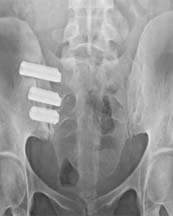What is Sacroiliac Joint Fusion?

Patients seeking relief for sacroiliitis, a potentially debilitating condition afflicting the sacroiliac joint in the lower spine, have a variety of conservative, non-invasive treatment options that are often effective in alleviating the pain and other symptoms of the disorder. Those who do not respond to these conservative therapies can opt for surgery, but historically this surgery for sacroiliitis has been complex, requiring large incisions and long recovery times.
Today, patients with moderate to severe sacroiliitis who do not respond to conservative sacroiliitis treatments have a new surgical option: Sacroiliac joint fusion. Sacroiliac joint fusion is suitable as a surgical treatment for degenerative sacroiliitis, inflamed sacroiliac joint dysfunction, iatrogenic instability of the sacroiliac joint, osteitis condensans ilii, traumatic fracture dislocation of the pelvis, and other causes of sacroiliitis.
This advanced procedure is made possible by a new generation of implants and minimally invasive percutaneous techniques (that is, requiring only a small incision), exemplified by the iFuse System. Percutaneous procedures have the enormous advantage of decreasing potential blood loss, reducing operative time, and preventing extensive surgery.
What is the iFuse Implant System?
The iFuse Implant System procedure is performed through an incision only 2-3 cm long, and usually requires no more than one hour. The implant typically involves inserting three small titanium fusion devices across the sacroiliac joint, creating a durable foundation to stabilize the joint and provide fixation. This minimally invasive surgical technique also offers maximal protection to the surrounding tissues and minimizes soft tissue exposure. Surgeons utilize live radiographic guidance during the procedure, providing real-time imagery of the sacroiliac joint, allowing the surgeon to ensure proper placement of the implants. This newer sacroiliac joint fusion technique represents a major breakthrough for patients with mild to severe sacroiliitis who do not respond to conservative treatments. The iFuse Implant System may provide effective relief of sacroiliitis pain, and provides much faster recovery times and fewer complications than traditional surgical treatments for sacroiliitis. We’ll talk about the recovery process from the IFuse procedure in our next blog.






